Buy this painting The Sunny Side by Winslow Homer by Studio POPPY as a reproduction on canvas, ArtFrame, poster and wallpaper, printed on demand in high quality.
About "The Sunny Side by Winslow Homer"
by Studio POPPY
About the artwork
The Bright Side (1866) by Winslow Homer.
Winslow Homer (Boston, February 24, 1836 - Prout's Neck, Maine, September 29, 1910) was an American lithographer, draftsman and painter. Considered by many to be the most important American painter of the 19th century,[1] Homer was a representative of realistic genre painting. He was an excellent animal painter and made many watercolors. He was famous for his seascapes.
Winslow Homer trained in lithography and then worked as an illustrator for newspapers, first in Boston and later in New York, where he lived from 1859.
In 1861 he made a brief study of working in oils. He was commissioned that same year by the still fairly young political weekly Harper's Weekly to make drawings to accompany reports on the American Civil War, to which the magazine devoted much attention.
The sketches and drawings he made at the front were later elaborated in oils. The illustrations were initially quite superficial and anecdotal in nature, but towards the end of the war they gained more depth and showed an understanding of the meaning and far-reaching consequences of the battle, as evidenced by, among others, the painting shown here, which would earn him membership in the Academy.
After the war, in the late 1860s and the decade that followed, he produced a large number of works, both newspaper illustrations and paintings. He sought inspiration in the popular seaside towns of Massachusetts and New Jersey, and in nature in the rural areas of New

About Studio POPPY
Nicoline studied at the Art Academy of Groningen. In 2011, she founded Studio POPPY and designs printed matter and wall decorations. Studio POPPY is located in the heart of Amsterdam... Read more…
 Netherlands
Netherlands Ordered in March 2020
Ordered in March 2020
 Germany
Germany Ordered in November 2020
Ordered in November 2020
 Netherlands
Netherlands Ordered in August 2020
Ordered in August 2020
 Netherlands
Netherlands Ordered in January 2022
Ordered in January 2022
 Netherlands
Netherlands Ordered in October 2017
Ordered in October 2017
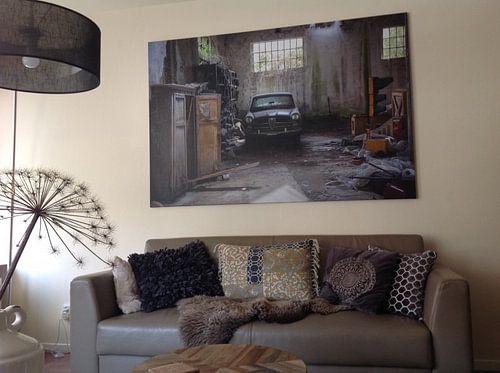
 Germany
Germany Ordered in July 2023
Ordered in July 2023
 Netherlands
Netherlands Ordered in October 2021
Ordered in October 2021
 Netherlands
Netherlands Ordered in August 2025
Ordered in August 2025
 Germany
Germany Ordered in December 2021
Ordered in December 2021
 Germany
Germany Ordered in July 2020
Ordered in July 2020
 Germany
Germany Ordered in February 2025
Ordered in February 2025
 Netherlands
Netherlands Ordered in August 2019
Ordered in August 2019
About the material
ArtFrame™
Interchangeable Art Prints
- High-quality print
- Easily interchangeable
- Acoustic function
- Large sizes available
Discover the artworks of Studio POPPY
 Cranes with tropical plants, botanical and illustrativeStudio POPPY
Cranes with tropical plants, botanical and illustrativeStudio POPPY Retro animal parade with big sister and twinsStudio POPPY
Retro animal parade with big sister and twinsStudio POPPY Jungle print palm trees with tiger, panthers and elephantStudio POPPY
Jungle print palm trees with tiger, panthers and elephantStudio POPPY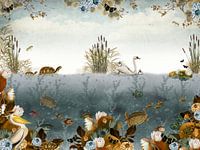 Beautiful print of an underwater world with swans and turtles.Studio POPPY
Beautiful print of an underwater world with swans and turtles.Studio POPPY Jungle wallpaper with giraffe, panther, toucan and monkeys.Studio POPPY
Jungle wallpaper with giraffe, panther, toucan and monkeys.Studio POPPY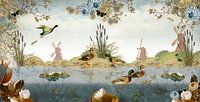 Dutch landscape with ducks and windmillsStudio POPPY
Dutch landscape with ducks and windmillsStudio POPPY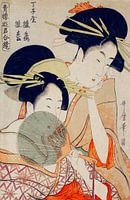 Japanese women courtesans by Utamaro KitagawaStudio POPPY
Japanese women courtesans by Utamaro KitagawaStudio POPPY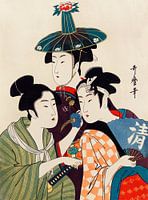 Three Young Men or Women by Utamaro KitagawaStudio POPPY
Three Young Men or Women by Utamaro KitagawaStudio POPPY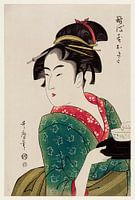 Naniwaya Okita by Utamaro KitagawaStudio POPPY
Naniwaya Okita by Utamaro KitagawaStudio POPPY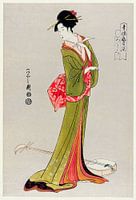 Itsutomi by Eishi HosodaStudio POPPY
Itsutomi by Eishi HosodaStudio POPPY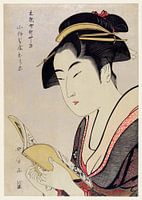 Kobikicho Arayashiki Koiseya Ochie by Utamaro KitagawaStudio POPPY
Kobikicho Arayashiki Koiseya Ochie by Utamaro KitagawaStudio POPPY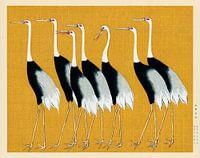 A traditional portrait of a flock of beautiful Japanese red crown crane by Ogata KorinStudio POPPY
A traditional portrait of a flock of beautiful Japanese red crown crane by Ogata KorinStudio POPPY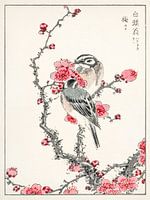 Pine Bunting and Plum Tree illustration by Numata KashuStudio POPPY
Pine Bunting and Plum Tree illustration by Numata KashuStudio POPPY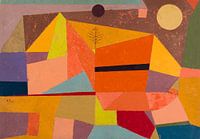 Heitere Gebirgslandschaft (Joyful Mountain Landscape) (1929) by Paul KleeStudio POPPY
Heitere Gebirgslandschaft (Joyful Mountain Landscape) (1929) by Paul KleeStudio POPPY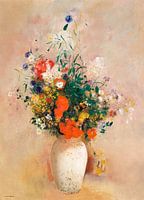 Vase with flowers by Odilon RedonStudio POPPY
Vase with flowers by Odilon RedonStudio POPPY Three seagulls (1900 - 1936) by Ohara KosonStudio POPPY
Three seagulls (1900 - 1936) by Ohara KosonStudio POPPY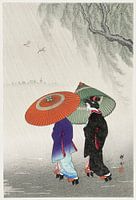 Two women in the rain (1925 - 1936) by Ohara KosonStudio POPPY
Two women in the rain (1925 - 1936) by Ohara KosonStudio POPPY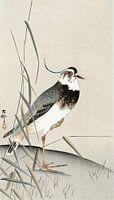 Lapwing and reed, Ohara Koson (1900 - 1930) by Ohara KosonStudio POPPY
Lapwing and reed, Ohara Koson (1900 - 1930) by Ohara KosonStudio POPPY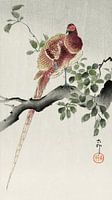 Copper pheasant (1900 - 1930) by Ohara KosonStudio POPPY
Copper pheasant (1900 - 1930) by Ohara KosonStudio POPPY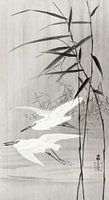 Two egrets in flight (1900 - 1936) by Ohara KosonStudio POPPY
Two egrets in flight (1900 - 1936) by Ohara KosonStudio POPPY













 Nostalgic Memories
Nostalgic Memories Serene Peace
Serene Peace









